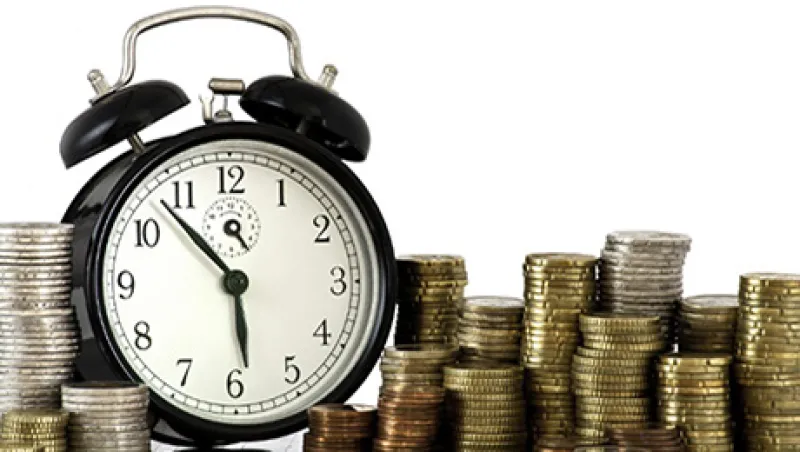At midnight Coordinated Universal Time (UTC) tonight, the world will get a replay of the final second of the day. To some on Wall Street, tonight’s leap second, due at 8:00 p.m. New York time, remains a matter of mild bemusement. The last time clocks took on an extra second at the very end of the last minute of the day, in the summer of 2012, Linux and Java operating systems suffered failures, though the damage to the global financial industry was contained as the leap second fell on a weekend. But this year’s leap second takes place as trading opens in East Asia, in the middle of an exceptionally volatile week for markets. That, coupled with the fact that “finance has become far more automated and interconnected since 2012,” means tonight will represent a “major test for the resilience and quality of many financial institutions’ technology systems,” says Victor Yodaiken, of FSMLabs, an Austin, Texas–based firm that builds time synchronization management tools for Wall Street.
Time synchronization matters on Wall Street, where trades now happen at the speed of millionths of a second and market participants rely on precise data to understand the sequence of an individual order’s life cycle. Several of the highprofile technology glitches that have blighted markets since the May 2010 Flash Crash have, to varying degrees, been down to time synchronization failures. In 2013, for instance, Deutsche Börse–operated derivatives exchange Eurex suspended trading for more than an hour after it emerged that incorrect time synchronization had caused internal electronic clocks to stray as much as 34 seconds from official time. According to Yodaiken, part of this was caused by problems with Eurex’s Linux-based trading architecture in relation to an imperfect alignment with the leap second that had taken place in 2012.
Leap seconds are designed to correct for the drift in the earth’s rotation away from atomic time, also known colloquially as official time, which is determined by the atomic clocks maintained by a global network of national observatories. The adjustment was introduced in 1975, well before the global financial system had high-speed computer networks doing trades at microsecond intervals. “2012 was the first time we had any kind of open discussion of this being any type of problem for finance,” says Yodaiken of the leap second.
But despite knowing today’s leap second was on the horizon for three years, market participants have done nothing to standardize their approach to accounting for it. Four main approaches dominate. Some exchanges and technology companies, including Singapore Exchange and Google, have already begun what’s known as a “smear,” in which internal electronic clocks are gradually slowed down over 24 hours to bring them back into alignment with atomic time. Other firms, such as Yodaiken’s, are adopting a “slew,” which involves doing much the same thing but slowing time over a more compressed period. FSMLabs will slow “the nanosecond hand of the clock” down for a five-to-seven-minute period from midnight UTC, he says. Other firms will simply jump back for a second after midnight UTC. Yodaiken describes this approach as “nutty, since time will appear to go backwards to programs, and that can cause enormous damage.” He concedes, however, that many investors in Asia trading live as the leap second happens will face no choice. The final approach will see some firms suspend trading for a few minutes altogether and restart with a corrected clock.
With all these different approaches, the potential for confusion is enormous — not just as the leap second takes place, but in the hours and days afterward as well. “It may be there’s just enough slack in the system that it doesn’t matter,” says Yodaiken. “But we really don’t know.” The focus on the leap second has at least highlighted the need for Wall Street to look more closely at time synchronization standards. The rule from the Financial Industry Regulatory Authority (FINRA) is that all market participants’ electronic clocks must be synchronized to within one second of atomic time (as determined in the U.S. by the National Institute of Standards and Technology). As part of the five-year effort to build a consolidated audit trail (CAT) of all quotes and orders in U.S. securities, the Securities and Exchange Commission has along with FINRA proposed bringing this requirement down to 50 milliseconds. Given the biggest and most sophisticated exchanges can now finish transactions in less than six millionths of a second, the proposed new standard is “not great, but at least it’s a start,” argues Yodaiken, adding that the adjustments required around episodes like the leap second can provide a fresh push for initiatives like the CAT.
“There are so many exchanges now and everything moves so quickly,” says Yodaiken. “I?f the times are off between exchanges and other market participants that throws everything off.” Tonight may provide a lesson in how much everything can get thrown off, and the damage that can cause.
Follow Aaron Timms on Twitter at @aarontimms.
Get more on trading and technology.







